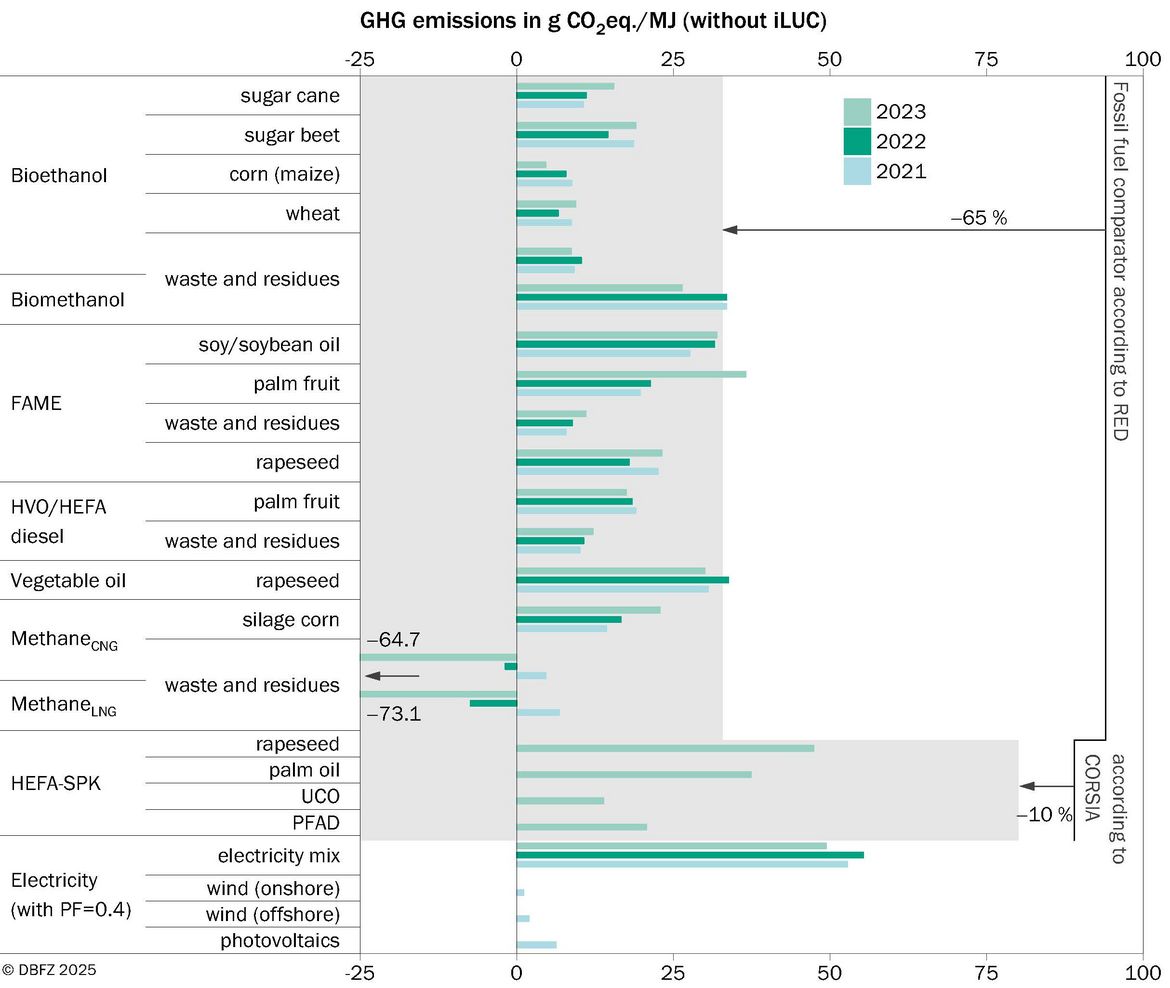Chapter 8: Environmental Aspects
The Environmental Aspectssection outlines the European, national and international frameworks for sustainability requirements for renewable fuels in the road, aviation and marine sectors. It also summarises the GHG calculation methodologiesaccording to the respective regulations and provides an overview of the GHG emissions of commercially established fuel options and those currently in the demonstration phase.
For optimal presentation and readability, we recommend downloading and
opening the monitoring report in a PDF reader.
Renewable fuels require sustainability certification in order to be accounted in the German national GHG reduction quota and the minimum renewable energy share required by the EU. Overall, since the introduction of the GHG reduction quota in 2015, the GHG reduction of biofuels has increased to 90% by the last reporting year 2023. However, the trend is not the same for each biofuel.

© DBFZ 2025, Reference: Götz, I. K.; Meisel K.; Schröder, J.; Remmele, E.; Thuneke, K.; Bauer, C.; Sacchi, R. (2025): GHG emissions of commercially available fuels. Fig. 8-2
The figure shows the GHG emissions of the commercially available renewable fuel options for road transport that were accounted in the GHG quota in 2021, 2022 and 2023. The figure also shows the default values for commercially available biofuels from the ISCC-CORSIA system document. For the GHG emissions from the use of electricity, the GHG values of the German electricity mix from 2021 to 2023 and the GHG value of offshore wind, onshore wind and photovoltaic electricity generation for 2021 are shown. In addition, the minimum GHG reductions for biofuels for road transport (65% for plants starting operation from 2021 onwards) and biofuels for aviation are shown compared to the fossil reference values from the revised RED II and ICAO CORSIA.
Recommended citation for the chapter: Götz, I. K.; Meisel K.; Schröder, J.; Remmele, E.; Thuneke, K.; Bauer, C.; Sacchi, R. (2025): Environmental assessment. In: Schröder, J.; Görsch, K. (eds.): Renewable Energies in Transport. Monitoring Report. pp. 131-142. Leipzig: DBFZ. ISBN: 978-3-949807-36-7. DOI: 10.48480/45hp-x131